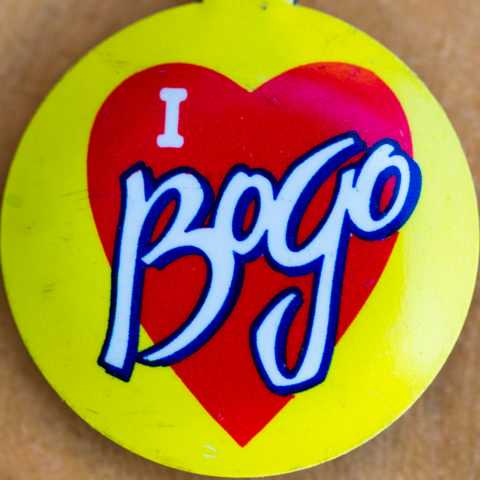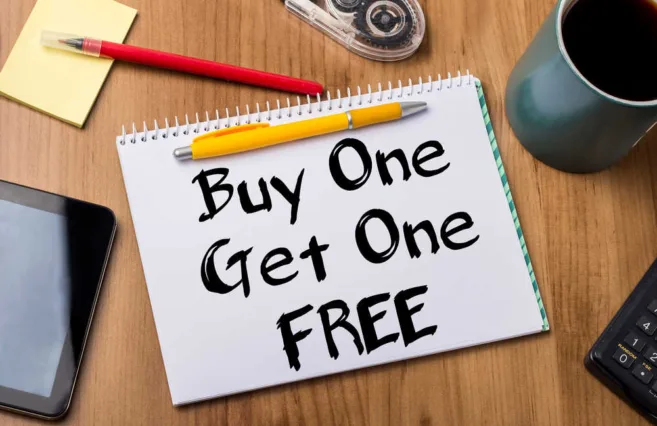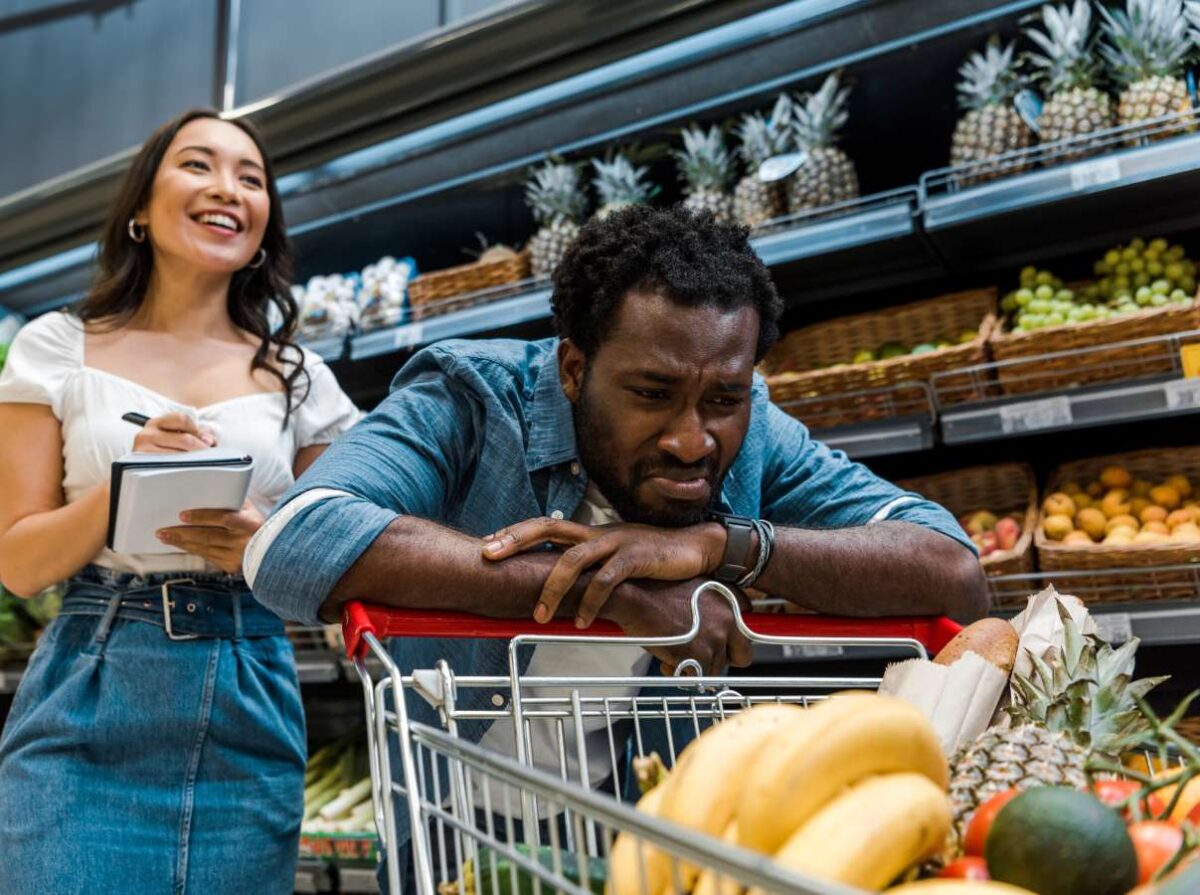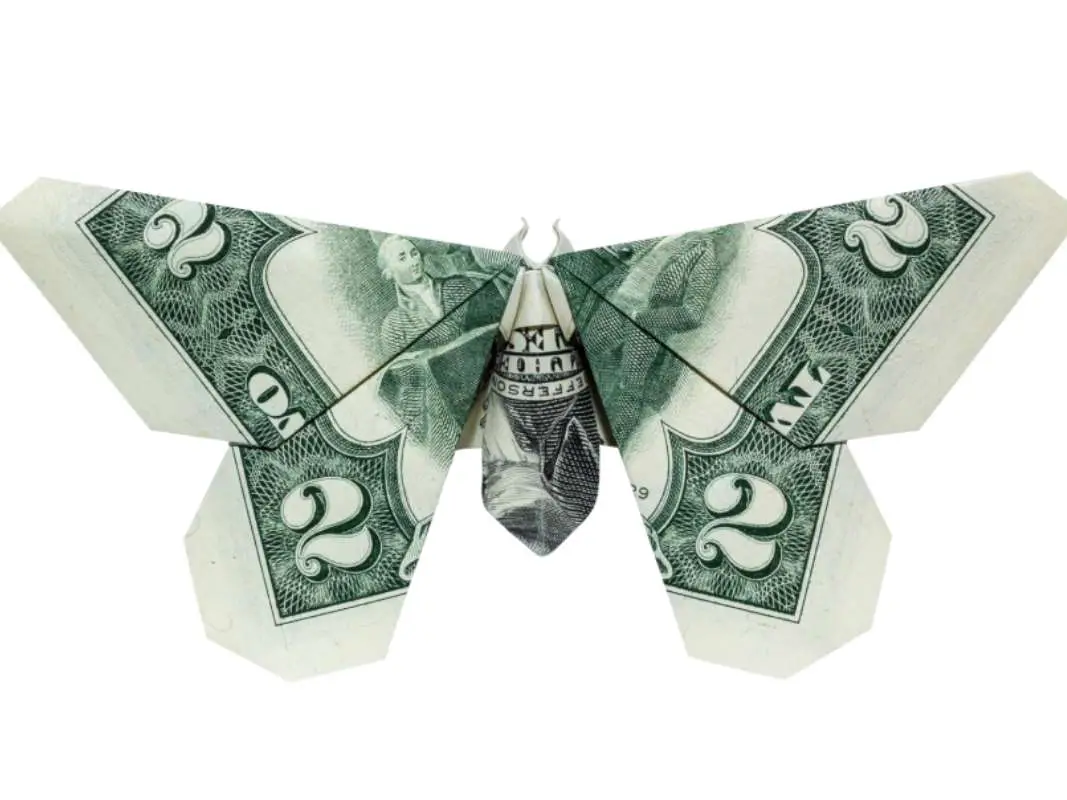
The term BOGO is used by grocery and retail stores to describe a buy-one-get-one-free sale. This means, if you purchase one item at the retail price, the second item (usually identical) is FREE.
Sounds great, right? Lot’s of people like getting free stuff!
Well, BOGO sales are typically used to lure customers into stores to get them to purchase not only the advertised sale price items but also other items while they are there.
Therefore, while BOGO’s would appear to be excellent deals, they can also cost you in several ways.
Here are 3 reasons buy-one-get-one-free might not necessarily be a good thing…
#1 – You are likely to buy more than you need.
BOGO causes you to buy more than you need.
Taking advantage of a BOGO purchase often causes customers to buy additional items that they would not normally purchase… or even need.
The fact of the matter is… If an item looks somewhat appealing and it’s being offered in a buy-one-get-one-free sale, it is usually quite hard to resist (whether you need it or not).
Check out our tips on how to not over-buy when bulk shopping.
#2 – Extra items can expire or get lost.
BOGO items perish or are forgotten about altogether.
Even when some of the items you’ve purchased in BOGO sales are used, it is often the case that the second item goes unused or is wasted altogether.
Either you forget that you bought more of the same product. Or (if it’s a food item), it is likely to go bad before you get around to using it.
Ask yourself these questions before purchasing buy-one-get-one-free items:
- What will you do with two of these things?
- Will you actually be able to use them both before they spoil?
- If they’re non-perishable, do you actually have a real use for one or both of the items?
When buying electronics and other high dollar items, be sure to read the fine print on buy one get one free as there are sometimes hidden details that require you to return items or do not actually save you money.
Here’s why you should read the fine print on buy one get one free deals.
#3 – The price is sometimes higher to begin with.
Sometimes, the prices are raised on BOGO sale items.
What I like least about BOGO sales is the fact that prices are often elevated before the items are placed in a BOGO sale.
For example:
- At my local grocery store, a gallon of apple juice normally sells for $3.99.
- For the past 2 weeks, they have been selling it for $4.39 in a BOGO sale.
- While the amount the item was raised is negligible when compared to how much a customer is likely to save, the price of the juice was still raised.
- It appears as if the customer is saving $4.39 in the sale (the price of the “free” one), when they are, in fact, saving only $3.60.
This is a very common sales tactic. And while at grocery stores there are still significant savings for the consumer during BOGO sales — at clothing stores, the gap is closed with even larger price increases during BOGO sales.
And customers are typically less price savvy when it comes to buying clothes (compared to when they are food shopping).

The BOGO Bottom Line
You don’t always have to get the second item. While many stores will advertise an item as a BOGO, they can sometimes honor the comparable sales price if you just buy ONE.
While this isn’t true in all cases, stores may enter BOGO items into the computer at half price. That means if a gallon of milk is sold for $4.99 in a buy-one-get-one-free sale, then you may be able to get a half gallon of milk for $2.50.
This is very important because the second gallon of milk may very well go down the drain anyway if you don’t think you could use it before it goes bad. Plus, you would receive comparable savings by buying only what you need.



